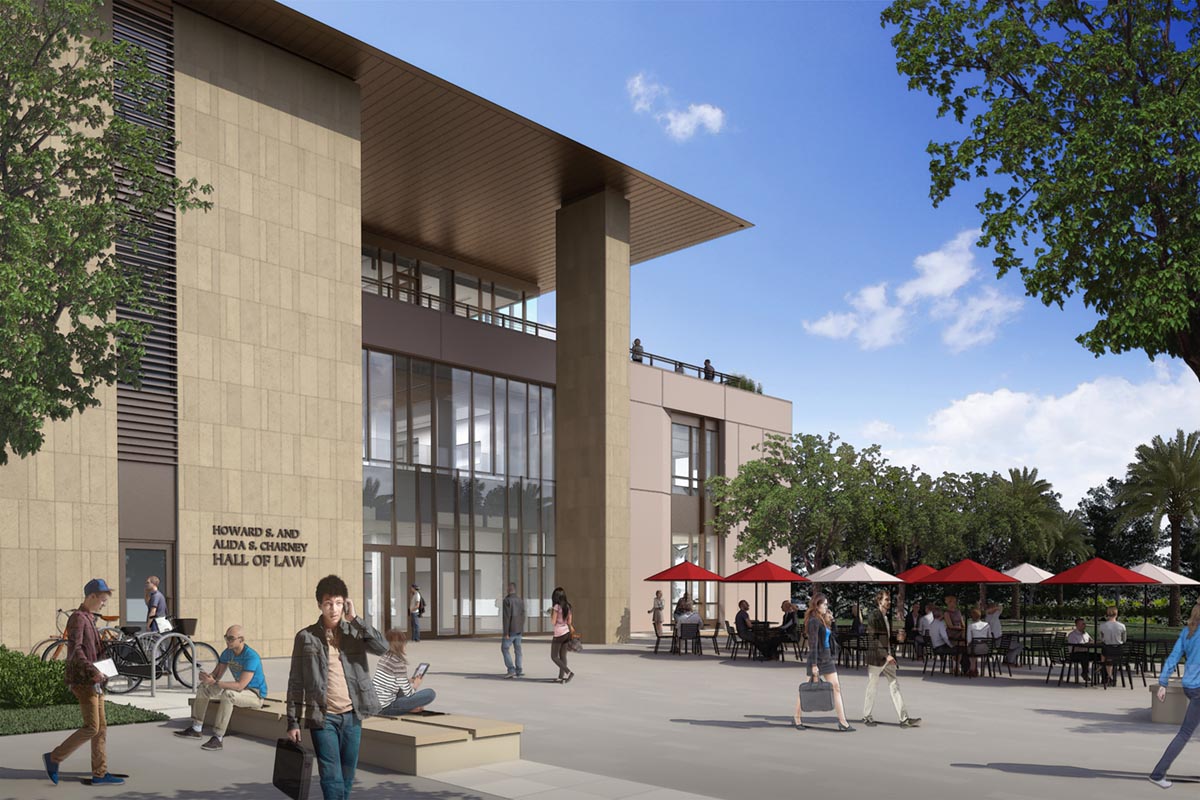Methodology
Before diving into some of Charney Hall's spaces, it is important to be transparent about this exhibit's methodology. Existing scholarly literature on Charney Hall is sparse. As of early 2020, the only academic article that exists about Charney Hall was produced by members of SCU’s Engineering Department and concerns the material composition of the building itself, particularly in terms of the woods used in its construction (see: Callens et. al., 2018). Nevertheless, there is a more considerable body of literature on the architecture of law school buildings in general (see: Wood 1998; Jerry 2004; McNeill 2008; Levine 2014).
The primary methodology that will shape this particular exhibit comes from Robert Jerry's 2004 essay, "A Brief Exploration of Space: Some Observations on Law School Architecture." Of law schools in general, Jerry notes:
“Law school makes a statement about the dignity of all visitors to and users of their facility.”
The methodology of this exhibit, then, will be primiarily concerned with the distinciton between the "users" and "visitors" of Charney Hall. It will be shown how Charney Hall privileges or disparages visitors and users alike.
Furthermore, the language of the above quote— that “law school makes a statement about the dignity”—personifies the place as the thing doing the action. Or in other words, it is not the visitors or users who have their own integral dignity, but it is in fact the building which produces that feeling. This exhibit thus assumes that it is the building itself—and not necessarily those who occupy or make use of it—that is the primary entity repsonsible for producing various emotional effects. Indeed in questioning notions of purported accessibility or inaccesibility, this exhibit will be strongly implicate related notions of dignity.
